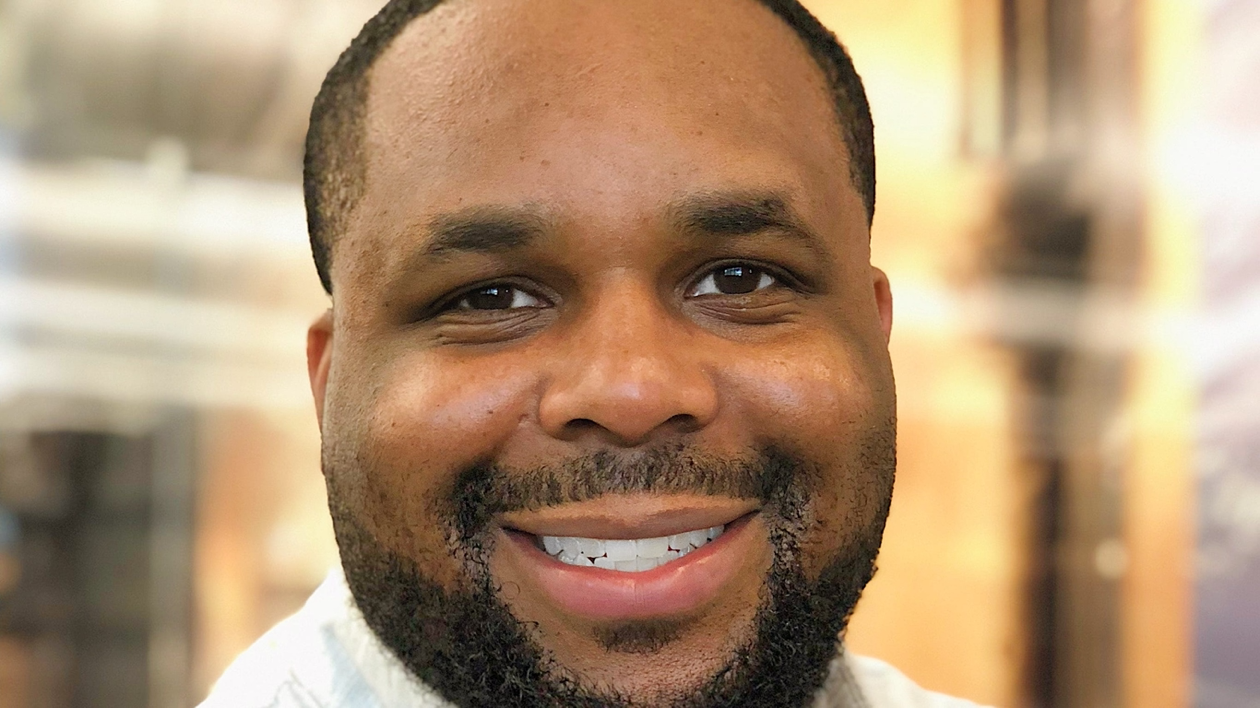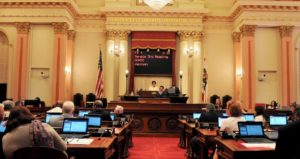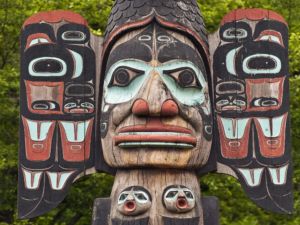Editor’s note: The following first-person accounts of the 1921 Tulsa Race Massacre contain graphic depictions and antiquated racial terminology. We have chosen not to edit these survivor accounts to leave their stories unencumbered by interpretation or exclusion.
TULSA, Okla. — From a small office inside the Greenwood Cultural Center in Oklahoma on a recent Saturday afternoon, Tiffany Crutcher could look south and see a Black Wall Street mural under a freeway, then east and see Vernon African Methodist Episcopal Church, the only Black-owned building that remains from the Tulsa Race Massacre of 1921.
A short walk would lead to old railroad tracks that historically divided the predominantly Black north side of Tulsa from the south part of the city.
But Crutcher doesn’t need to look at artwork, landmarks or relics to be reminded of the racially motivated destruction of Black prosperity.
Her family’s past is marked by the massacre, which sparked what some experts in Oklahoma and across the country refer to as “transgenerational trauma,” or the concept that people who experience traumatic events can pass negative emotional and mental symptoms from the event, as well as coping behaviors, to future generations of their family.
Crutcher said her great-grandmother, Rebecca Brown Crutcher, fled Tulsa’s Greenwood District when arson fires destroyed Black livelihoods and bullets killed Black lives 100 years ago in the two-day Tulsa Race Massacre.
Crutcher also said she was an adult before she learned anything about the massacre.
Across the country when she told other Black people she was from Tulsa, some responded by mentioning Black Wall Street and the deadly rampage.
Finally, she asked her father about it.
“My dad didn’t learn about it until he got back from Vietnam right when Martin Luther King was assassinated and riots broke out,” Crutcher said. “That’s when she whispered to him — she whispered — ‘something like that happened here.’”
Like many Black Americans who have lost loved ones in recent years, Crutcher sees a link between violent acts of white supremacism in America’s past and deadly incidents today.
“What was she thinking, having to get away from racial terror, violence and mobs of white rioters?” Crutcher said about her great-grandmother. “When I think about that, I can’t help but fast forward and think about what happened to my twin brother when police officers were coming up on him with guns, and helicopters were looming, and he had his hands up just like the Black men in the massacre had their hands up.”
Her twin brother was Terence Crutcher.
On Sept. 16, 2016, he was shot and killed by former Tulsa police officer Betty Shelby while he was next to his SUV in the middle of a road. He was 40.
Video from a police helicopter and patrol car dashcam showed Crutcher had his hands in the air.
More from The Oklahoman: Skewed view of Tulsa Race Massacre started on Day 1 with ‘The Story That Set Tulsa Ablaze’
Shelby testified in court she was scared, Crutcher wasn’t obeying commands and he appeared to be reaching into his vehicle. Crutcher was unarmed. An autopsy revealed he had PCP in his system.
A jury found Shelby not guilty of first-degree manslaughter.
For Tiffany Crutcher — an activist in the local community — Tulsa and the Greenwood District provide inspiration for what can be, and heartache over what is done.
“That’s my story, and I’m going to stop because I’m about to bust out in tears,” she said.
Black Wall Street: 15 books to help you learn about the Tulsa Race Massacre
Repairing worlds
For Black descendants of historical trauma, not only do thoughts of what happened to their families haunt them, but the places in which those tragedies occurred also can be triggers for pain, grief and continued fear.
Mark A. Davis, chief programs officer of Mental Health Association Oklahoma, grew up in Tulsa and was well-aware of the massacre.
Pursuing reparations: Tulsa Race Massacre survivors ask city to ‘do the right thing’
“Those stories of property being burned, bombings, people’s kids being killed and murdered, those stories are passed down, and to know that one is still existing within feet or miles of where this unfortunate traumatic event occurred in 1921, just being in that area could also provoke or invoke feelings of anger, sadness, depression, stress, worry, concern,” Davis said.
Indeed, the stories echo today in Black culture and shape Black thought, some said.
Brandon Jones, a Minnesota-based behavioral health consultant, said trauma is what links events like Tulsa and the Black experience today.
“The mindset in the Black community is, we hear ‘pull yourself up by your bootstraps,’ but at any time that can be taken away, so that’s a constant fear in the Black community,” Jones said. “‘Just keep your head down and get a job’ doesn’t work anymore … due to economic oppression and racial tension, you live in fear that at any time your life can be taken. We are a narrative people who share stories. That instills fear.”
An emerging field of research supports those claims, with some experts concluding the emotional and psychological impact of a single traumatic event can have a ripple effect through subsequent generations of a survivor’s family.
Researchers have studied such impacts among the offspring of those who have survived some of history’s deadliest events, from the Holocaust and the atomic bombs in Japan, to the killing of nearly 1.5 million Armenians in Ottoman Turkey and the Khmer Rouge genocide in Cambodia.
‘We survived it, thank God’: Tulsa Race Massacre survivor discusses tragedy 100 years later
Brent Bezo, at Carleton University in Ottawa, Canada, examined the intergenerational impact of the early 1930s Holodomor genocide — a famine orchestrated by Soviet dictator Josef Stalin that killed millions — on three generations in 15 Ukrainian families.
After 45 interviews with first-generation survivors, second-generation adult children and third-generation adult grandchildren of the same line, Bezo concluded that a “constellation of emotions, inner states and trauma-based coping strategies” were not only found in the survivors during the genocide period, but were also transmitted into the second and third generations.
Those emotions included horror, fear, mistrust, sadness, shame, anger, stress, anxiety and decreased self-worth.
The findings were published in a 2015 article for the journal “Social Science and Medicine,” with one conclusion being the need for “multi-framework approaches for studying and healing collective trauma.”
Skeptics of such research — which often raises the controversial question of whether trauma can be inherited through biology — say the work is rife with red flags like small sample sizes and misguided claims of causality.
Still, those who study the issue say common themes have emerged, mainly with regard to how the offspring of trauma survivors form their own identities, and how they cope with what has happened in their families.
Yael Danieli, editor of the “International Handbook of Multigenerational Legacies of Trauma,” says trauma is transmitted in word, writing, body language and the “conspiracy of silence” after the event.
One of several coping strategies trauma survivors and their children use is to behave as though the event never happened, said Danieli, founder and director of the New York-based International Center for Multigenerational Legacies of Trauma.
In Tulsa, Mount Zion Baptist Church was another place of worship destroyed in the massacre. The church was rebuilt in the decades that followed, but Pastor Leroy Cole said younger generations experience fear passed down.
And, Cole said, there is reluctance among some to discuss the massacre.
“It’s just the idea that if you have a traumatic event that is so traumatic you don’t want to remember it, and so what happens is that sometimes when we discuss the massacre now, you’ll have some pushback, and the pushback comes from the idea of we really don’t want that tag, but it is history,” Cole said.
The offspring of trauma survivors exhibit other commonalities.
Danieli, the researcher, said descendants often are confused about their place in the world, which they see as dangerous and indifferent to their family’s suffering.
Depression and post-traumatic stress are common experiences.
“I believe profoundly that children of survivors of all kinds, their most profound commitment is to repair the world for their parents, their forebears and themselves,” Danieli said.
‘Racial battle fatigue’
Against the backdrop of slavery, Jim Crow laws, racial massacres and modern police shootings involving African Americans, some in the Black community say the constant work of repairing their families and culture is undertaken in a system that is inherently against them.
“Whether it’s limited access to medical services, being forced to live in certain subpar neighborhoods, poor resources in regards to educational systems, being excluded from various employment opportunities, when you’re brought up in a system like that, then it makes it very difficult for people to really have a healthy of quality of life,” Davis said.
Symptoms of what Davis calls “race-based traumatic stress” include depression, anger, recurring thoughts of a negative experience, sleeplessness, hyper-vigilance and low self-esteem.
Jones, the behavioral consultant, suggested such stress can manifest in a Black person’s daily interactions with those outside the Black community.
What has been handed down from previous generations who learned to survive is the concept of conforming to what “polite society” expects, Jones said, which really means white standards for social interaction.
This teaching, on top of daily interactions with non-Black people who scrutinize, fear, ignore or patronize Blackness, leads to mental and emotional burnout, Jones said.
“We think about it before the interaction comes up,” he said. “It’s a psychological Olympics. Racial battle fatigue.”
Lloyd Ware, a 63-year-old Black man who recently came from Tennessee to revisit Greenwood, suggested that, for Black people, the paradigm can change throughout a single day.
“You have to probably speak three different languages — ghetto-neighborhood, common language and upper class,” Ware said. “So you have to be able to navigate in all three of those fluently.”
Annette Lawrence, 62, visited Tulsa’s John Hope Franklin Reconciliation Park, which, with artwork and plaques, tells the story of the massacre.
Part of the Black experience, she said, is making younger Black people aware of the biases some police officers bring to their job.
“You have to be mindful and careful of every move you make, so you are not stereotyped for some other incident that you had nothing to do with,” Lawrence said.
Davis said the concept is reasonable when seen through the lens of historical trauma.
“When you reflect back on the fact that people have lost family members, they’ve lost their property, they lost their sense of foundation, there’s a tendency which is very much understandable, to where there’s a lack of trust (of) public entities, governments, local, state that is carried down,” he said.
While Black people are working through these issues, they must also endure calls by some — typically of the “bootstraps” kind — to move on from past events. Or, get over it.
Davis is aware of the sentiment.
But with some Tulsa Race Massacre victims still not accounted for and a city digging for mass gravesites, Davis said the “get over it” mentality strips people of their humanity, dignity and justice.
Remembering what happened is not about race or politics but about doing what is right and being respectful, Davis said.
“If that was your grandmother or your grandfather that was shot and murdered, and their property and everything that they owned was burned to the ground, and if these were your kids that were killed out in the streets, in Greenwood, would you still have that sentiment?” he said. “Would you still have that perspective? If this was your family, would you feel the same knowing that your grandfather is buried somewhere out there? Why don’t you forget about it?”
‘It’s the same culture’
At the Greenwood Cultural Center, Tiffany Crutcher was busy organizing events for the massacre anniversary. She heads the Terence Crutcher Memorial Foundation and is spearheading the move to build a Tulsa Race Massacre memorial in Greenwood.
Crutcher pointed to a church across the street, where a funeral was being held and elderly Black visitors walked in and out of the sanctuary.
“I played right across the street at that church, on that playground, as a little girl, because my parents are ministers and gospel musicians and they would do musical workshops in the church, and me and my brothers would play on that sacred land and we didn’t know it was sacred land,” she said. “We didn’t know it was blood-stained.”
Work on the church began in 1919. When the massacre unfolded two years later, some Black worshipers hid in the church’s basement.
Crutcher regrets not asking her great-grandmother about the massacre. But she said her great-grandmother was forced into silence and had to deal with internalized grief because of the fear that if she said anything, something similar would happen again.
“The same racist culture that burned down Black Wall Street was the same culture that killed my brother with his hands in the air,” Crutcher said. “It’s the same culture that killed my twin brother. And when we talk about the continued harm, all you have to do is open up your eyes and see the continued effects of what happened 100 years ago.”




